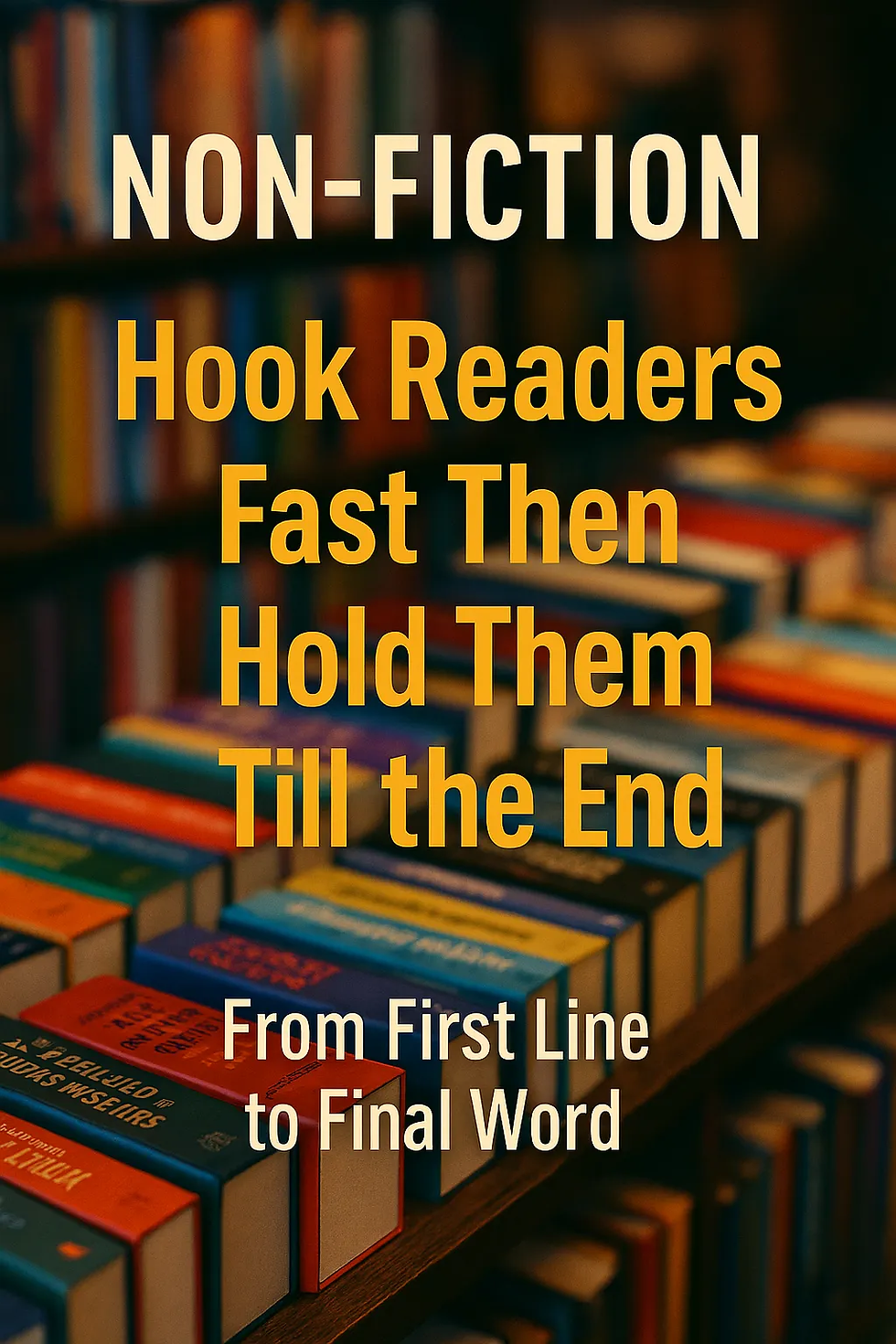NON-FICTION Hook Readers Fast Then Hold Them Till the End
- C. L. Nichols

- Sep 14
- 2 min read
From First Line to Final Word

Getting someone to click on your article is hard. Keeping them reading past the first few lines?
Whether you’re writing blog posts, newsletters, essays, or landing pages, your opening needs to grab attention fast. Your structure needs to hold it.
The first sentence should make people stop scrolling. It doesn’t need to be clever. It needs to be clear and make them curious.
Bad. “There are many ways to write a good article.” This is vague and forgettable.
Better. “Most articles lose readers in the first five seconds.” This sets up a problem. The reader wants to know more.
Use short sentences. Ask a question. Make a bold statement. Give a surprising fact. Anything that makes the reader lean in.
People skim. Subheadings let them decide whether to keep reading.
Weak subheading. “Tips for Better Writing”
Stronger. “How to Write Openings That Keep Readers Hooked”
Each subheading previews what comes next. They’re signposts where readers move through your content without getting lost.
Walls of text push people away. Break your writing into short paragraphs. One-sentence lines add rhythm.
Shorter paragraphs are easier to read. They feel faster. They keep readers moving.
Use 2–4 sentence paragraphs most of the time. Drop in a one-liner when you want to land a point.
Readers remember examples more than advice. If you’re telling someone how to write a strong headline, show them one. If you’re explaining how to build suspense, give a sample paragraph.
Instead of saying “use emotion,” write: “Compare ‘I was tired’ to ‘My hands shook as I reached for the coffee.’ One tells. The other shows.”
Examples make your advice more useful.
Don’t pad your writing with filler. Get to the point.
Instead of. “It is important to consider the various factors that contribute to reader engagement.” Write. “Here’s how to keep readers interested.”
Avoid vague phrases. Be clear.
Your ending should reward. Don’t just stop. Give the reader something to take away.
Summarize your main points. Offer a next step. Ask a final question. Give a short checklist. Link to a related resource.
Bonus Tips.
Use active voice. Say “The writer shared tips” instead of “Tips were shared.”
Avoid jargon. Say “start strong” instead of “optimize your introductory paragraph.”
Use formatting. Bold key phrases. Use bullet points. Make it easy to scan.
Write like you talk. If you wouldn’t say it, don’t write it.
Read your work out loud. Catch awkward phrasing and slow sections.
Good writing needs to be clear and useful. Hook readers early and guide them with structure.




Comments